Pioneering Art Giant Shown In a New Light at The Menil — Robert Motherwell Makes Drawing Magic
When Everything Is An Abstraction
BY Tarra Gaines // 02.13.23Robert Motherwell, Three Figures Shot, 1944.
For 15 years the Menil Collection’s Drawing Institute has made its mark on art scholarship when it comes to the sometimes under appreciated art of drawing. Then with the opening of its dedicated Drawing Institute building little more than four years ago, Houston art lovers found themselves given a place for unique discoveries of artists many thought they knew well.
Now, the new Robert Motherwell Drawing: As Fast as the Mind Itself is the latest Menil Drawing Institute exhibition to give us a new perspective on a pioneering artist. Though celebrated for his large-scale abstract paintings, this exhibition illustrates how Motherwell used drawing as a foundational step in his creative process, allowing viewers to journey deep into his mind.
As one of the founders of the Abstract Expressionist movement in the 1940s and 1950s, and a member of the New York School, Motherwell is now seen as one of the giants of 20th century American Art. Yet many of his monumental works evolved from his drawing practices.
Containing more than 100 works, As Fast as the Mind Itself stands as the most comprehensive surveys of Motherwell’s drawings and includes selections from his major series including the Elegies to the Spanish Republic, Beside the Sea, Lyric Suite, Drunk with Turpentine and the Opens. Organized by the Menil with the support of Motherwell’s Dedalus Foundation, the exhibition is timed especially for the publication of Robert Motherwell Drawings: A Catalogue Raisonné, a resource 10 years in the making.
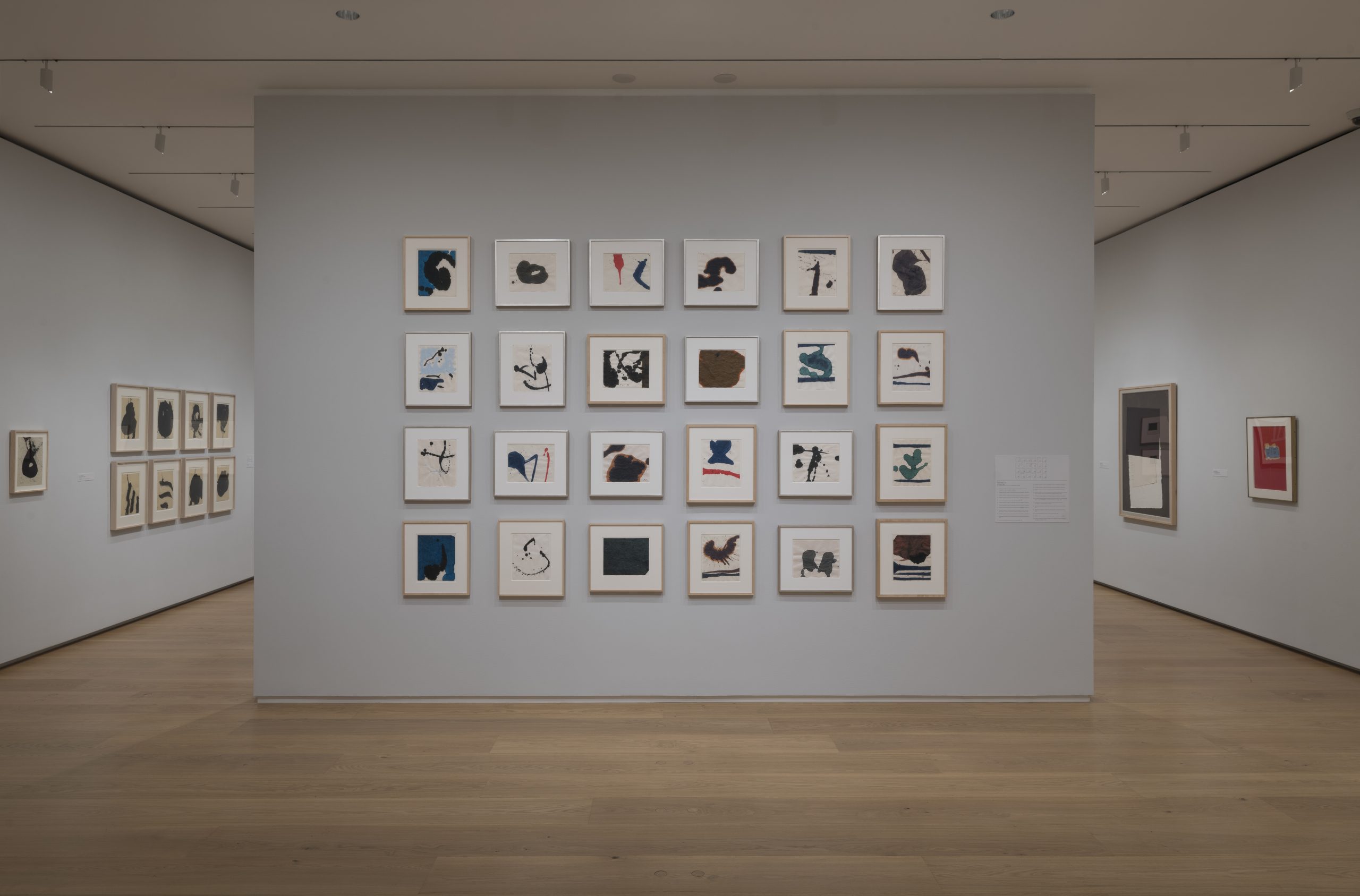
The exhibition begin chronologically with Motherwell’s life and art-changing trip to Mexico in the 1940s where the philosophy scholar traveled with surrealist Roberto Matta and later collaborated with Wolfgang Paalen. One of the highlights of the first gallery is a display of pages — both on the original paper and photos — from Motherwell’s Mexican Sketchbook, his early use of automatism, the Surrealists’ practice of using drawing to explore the subconscious imagination.
“He let the mind and the hand have their own agency as a first way to create shapes,” Menil Drawing Institute curator Edouard Kopp says. “Then comes the second stage which is more conscious. Which is about completing an image, building something.”
Throughout the exhibition, viewers see how automatic drawing yields lines and shapes that Motherwell would then turn into images and then would sometimes obscure those first creative marks with inked geometric and organic forms.
The first gallery also holds Motherwell’s early and more figurative pieces, including Three Figures Shot, the 1944 ink on paper work likely ruminating on the Spanish Civil War. Yet Katy Rogers, the director of Dedalus Foundation’s Robert Motherwell Catalogue Raisonné Project, explains that the work could reflect several personal and world events brewing in Motherwell’s mind at the time. These include the Spanish Civil War, the Mexican Revolution, D-Day and the recent death of his father. And this is where Motherwell’s philosophical background and art merge.
“Everything is an abstraction that we experience. You’re always taking something out of the world and abstracting it through your experience,” Rogers says of Motherwell’s philosophy of art and the mind.
For Motherwell these experiences and their filtering through the subconscious became the source of art, especially “the idea of the after image,” Rogers notes. “Everything you experience leaves an impression on your subconscious, whether or not you’re aware of it,
“These after images might be layer upon layer of personal experience but they might also be literary or cultural images I think that’s his subject. If the personal afterimage becomes abstract, sometimes through the drawing process, it has the power to lead viewers to their own individual connection with that art.
“If it is this personal after-image that has a better chance of translating to a universal audience that something that is explicitly figurative.”
Drawing Infinite Diversity With Robert Motherwell
In some ways, the exhibition’s organization follows Motherwell’s lead. Though beginning chronologically, those afterimages reverberate throughout his life’s work connecting the art through time. The placement of his breakthrough work with black and white, 1948 Elegy to the Spanish Republic No. 1 along with later works on paper into the mid-1970s, illustrate the power of an initial drawing that becomes a creative seed for the rest of his career.
“The idea was to show that Motherwell’s carees does not follow a straight line, but also he has different temporalities,” Kopp says. Kopp adds that we can see images from the first Elegy evolving through three decades of Motherwell’s work while also reflecting back to the beginning.
“You see how he’s able within certain parameters to create infinite diversity,” he notes.
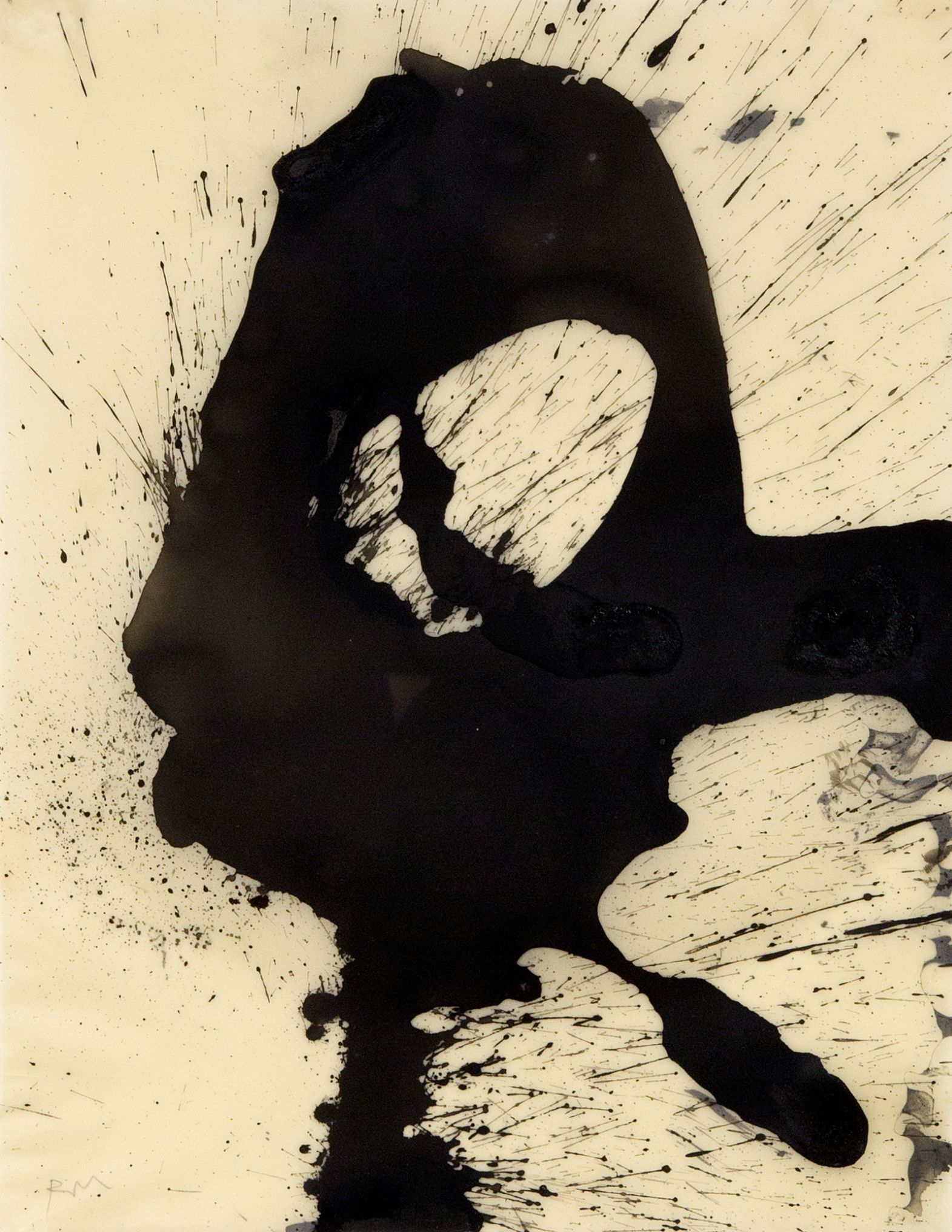
Perhaps the highlight of the whole Menil exhibition, an extraordinary selection of works from Motherwell’s Lyric Suite, also illustrate this evolution. Writing of the series later, the artist himself recounted that after purchasing a thousand sheets of Japanese rice paper on something of a whim.
“It came to me in a flash: paint the thousand sheets without interruption, without a priori traditional or moral prejudices or a posteriori ones, without iconography, and above all without revisions or additions upon critical reflection and judgment,” Motherwell wrote.
This Menil exhibition gives viewers a rare opportunity to see 32 works of the Lyric Suite displayed together and a kind of purity of drawing in the instance of creation without revision.
Motherwell moves back to black in some of his later series and the exhibition reflects the shift with work from the Drunk with Turpentine series, yet we continue to see the echo of those beginning forms and lines throughout.
“His conception of drawing is multiple and it evolves,” Kopp says of Motherwell and also perhaps of the exhibition as a reflection of the artist’s work. “While most artists may have one mode or two, I think he has at least four, and if you count collage, it’s five.
“Each mode implies a particular approach to space, to line, to drawing.”
Robert Motherwell Drawing: As Fast as the Mind Itself is on view at the Menil Drawing Institute through March 12.

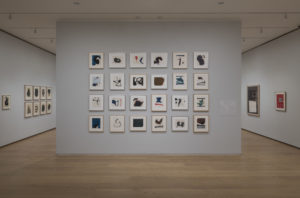
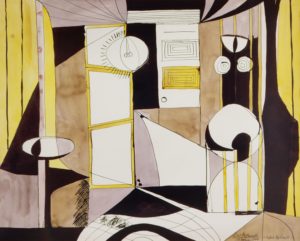
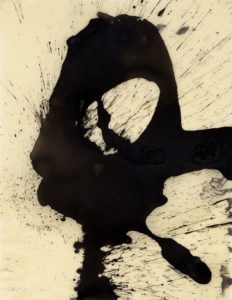
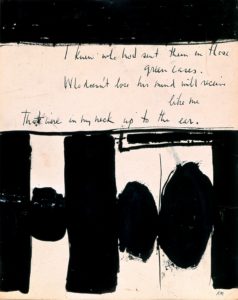
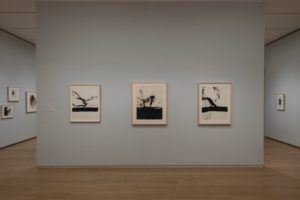
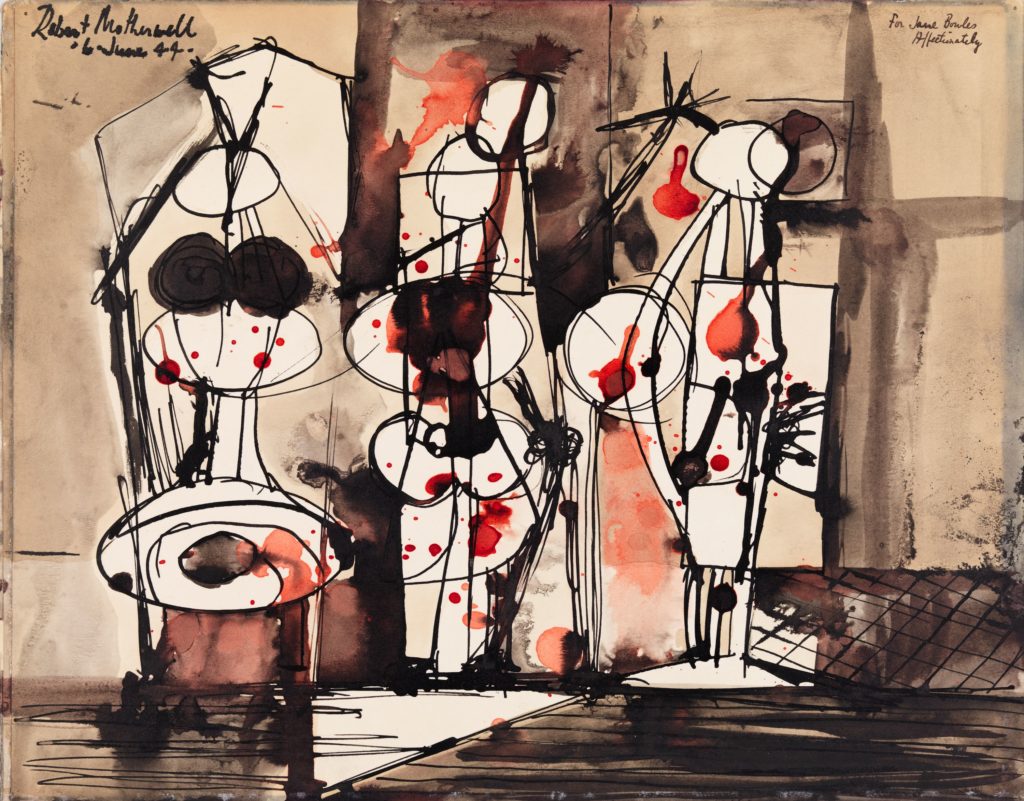
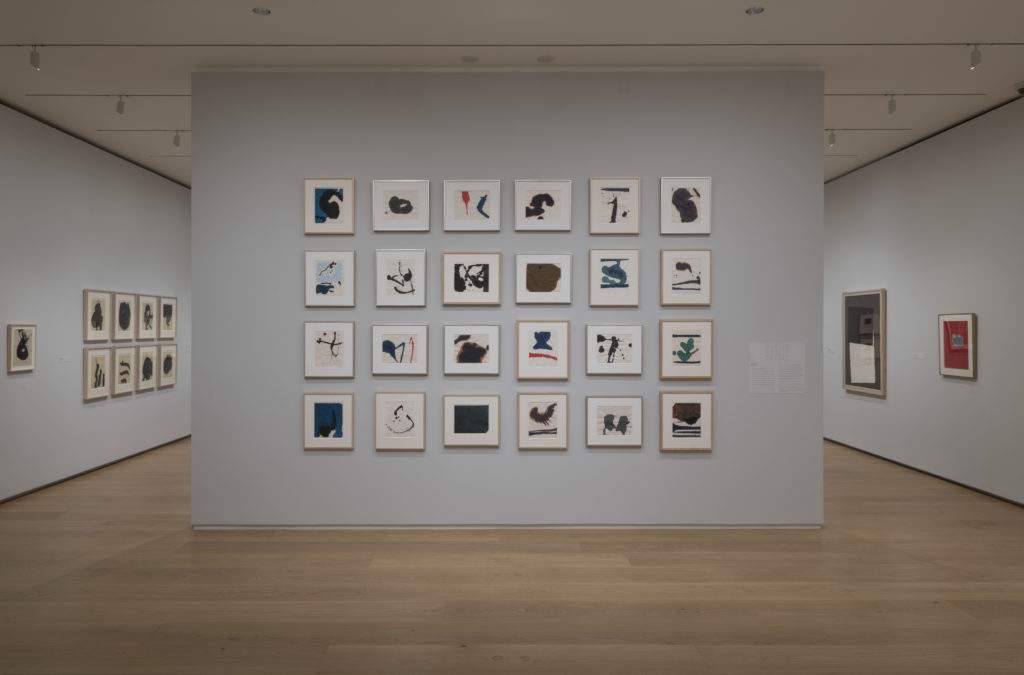
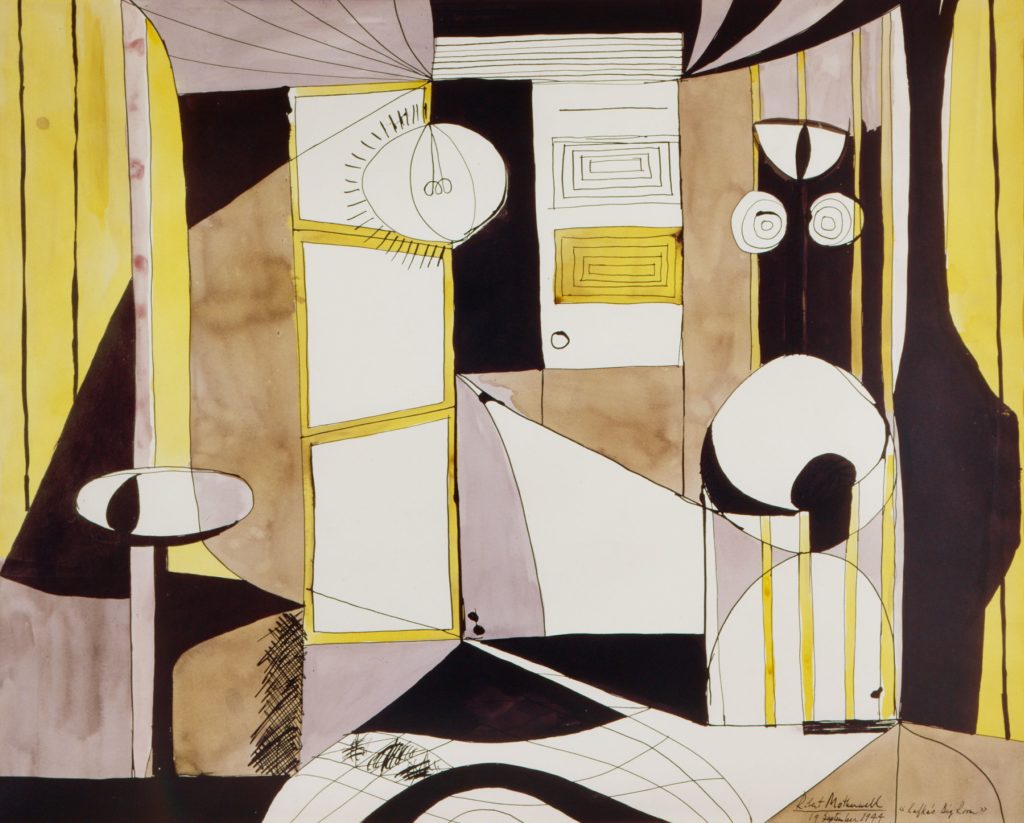
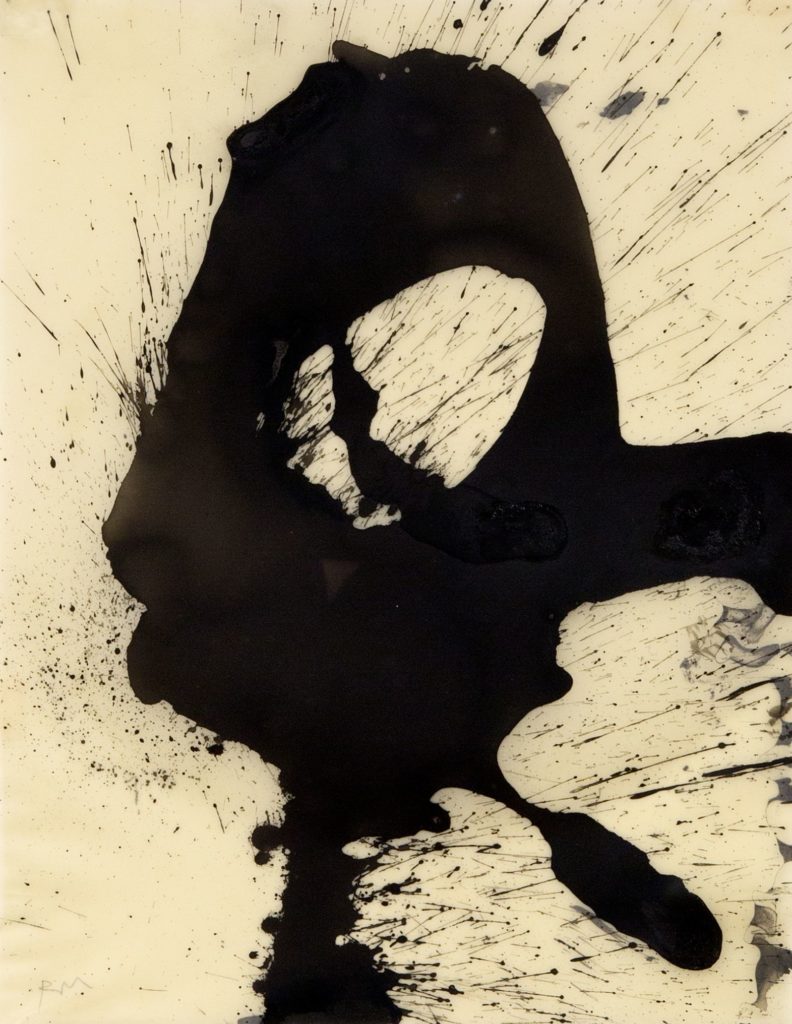
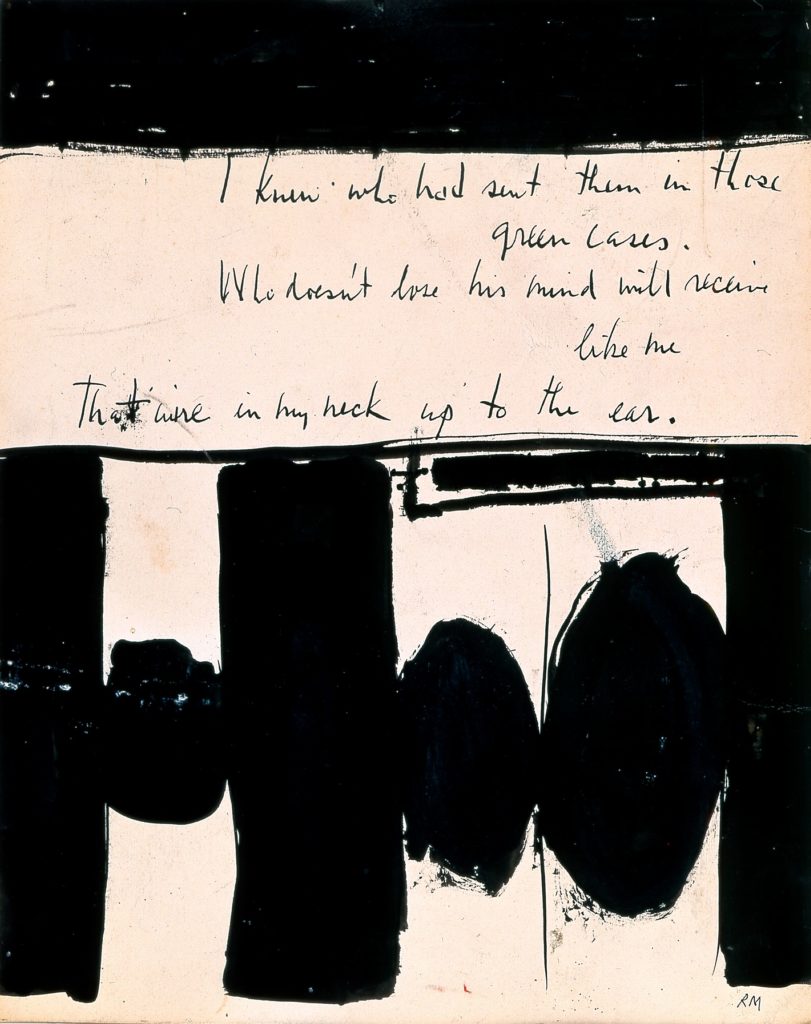











_md.jpeg)





